Want quick wins you can actually ship? You are in the right place. This guide shares AI Side Project Ideas for Beginners that cover traditional machine learning and introductory generative AI projects, using simple tools, free datasets, and clear steps. You will find eight starter projects for beginners, a fast setup plan, and a simple framework to plan, test, and show your work.
Small projects beat big plans. You learn faster, build proof for internships or junior roles in machine learning, and grow the confidence to tackle harder ideas. Pick one idea and commit to a tiny deadline, like 7 days. You can do more in a week than you think.

Before You Start: Simple Setup, Tools, and Data Sources

You can set up everything in under 60 minutes. Choose one path.
- Path 1, easiest: Google Colab. No installs. Open a new notebook and start coding.
- Path 2, local: Install Python 3.11, then set up VS Code.
Recommended packages to install with Python:
- pip install pandas, scikit-learn, numpy, matplotlib, jupyter, gradio
- For deep learning: pip install tensorflow keras or pip install torch torchvision torchaudio
Use a clean folder layout:
- data, notebooks, src, models, reports
Basic machine learning workflow:
- Define a small goal.
- Collect or choose data and perform data preprocessing.
- Split into train and test.
- Build a simple baseline first.
Trusted data sources to explore: Kaggle datasets, Hugging Face Datasets, and the UCI Machine Learning Repository.
Ethics and safety in plain words:
- Use public data, respect licenses, and credit sources.
- Avoid private or sensitive info.
- Test for bias. If one group performs worse, call it out and fix it.
Quick glossary:
TermPlain meaningAccuracyShare of correct predictions across all predictions.F1Balance of precision and recall, good for uneven classes.OverfittingModel memorizes training data and fails on new data.BaselineThe simplest model to beat, like “most frequent class.”
Pre-flight checklist:
- You can run Jupyter or Colab.
- You can load a CSV into pandas.
- You can split train and test.
4 Quick AI Side Project Ideas for Beginners You Can Finish in a Weekend
Get momentum fast. Each of these takes hours, not weeks. Ship a tiny demo with Gradio or Streamlit so you have a link to share.
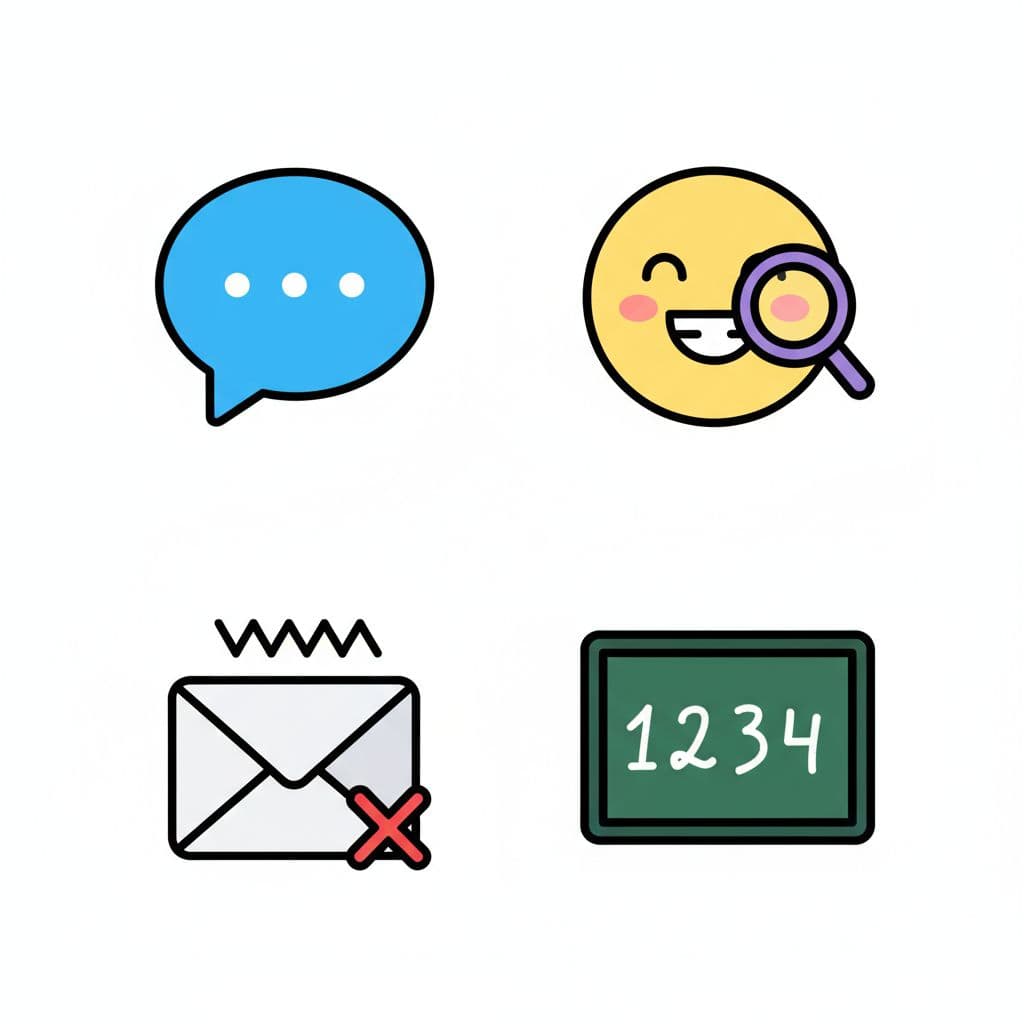
Build a Simple Chatbot That Answers Common Questions
- What you will build: A small QA chatbot for a topic you know, like school rules, gym hours, or class notes.
- Why it fits: Starts with simple rules, grows as you add smarts.
- Tools: Python, basic keyword matching, optional spaCy, optional LLM API.
- Data: A short FAQ in CSV or JSON.
Step-by-step:
- Load your FAQ entries with questions and answers.
- Match by keywords or simple intents to pick the best answer.
- Add a fallback response for unknown questions.
- Optional, call an LLM API, leveraging generative AI techniques, for hard questions.
- Wrap it in a Gradio chat UI.
Success metric: Answers 80 percent of 30 test questions clearly.
Time: 4 to 6 hours.
Stretch goal: Add confidence scores, show sources, and log unknown questions for future updates.
Helpful context: See this list of AI project ideas for beginners for other chatbot angles you can adapt.
Sentiment Analyzer for Reviews or Tweets
- What you will build: A sentiment analysis tool that marks text as positive, negative, or neutral.
- Why it fits: This is a classic NLP task with clean text classification, clear metrics, and quick feedback.
- Tools: Python, scikit-learn, CountVectorizer or TF-IDF, Logistic Regression.
- Data: Public movie or product reviews.
Step-by-step:
- Clean text, lowercase, remove noise. This is the initial step of data preprocessing.
- Split train and test.
- Train a baseline model on unigrams.
- Tune n-grams and regularization strength.
- Report accuracy and F1.
- Add a simple UI where users paste text.
Success metric: F1 score of 0.80 or higher on the test set.
Time: 4 to 6 hours.
Stretch goal: Show top words that drive the decision and add a batch mode to score a CSV.
Want more starter-friendly topics to keep in mind as you pick data? Browse these curated Artificial Intelligence project ideas.
Spam vs Not Spam Classifier for Messages or Emails
- What you will build: A spam detector that flags spam.
- Why it fits: Classic problem, trains fast, easy to explain.
- Tools: scikit-learn Pipeline with TF-IDF and Naive Bayes.
- Data: Public SMS spam dataset.
Step-by-step:
- Load and label your messages.
- Build a Pipeline that vectorizes and trains Naive Bayes.
- Execute model training on the train split only.
- Report precision, recall, and a confusion matrix.
- Save the model to disk.
- Add a tiny UI for testing messages.
Success metric: High precision on the spam class to avoid false alarms.
Time: 3 to 5 hours.
Stretch goal: Handle emojis and links, add threshold sliders, and export as a simple API.
Handwritten Digit Recognition with MNIST
- What you will build: A model that reads digits 0 to 9. This is image classification for handwritten digit recognition.
- Why it fits: MNIST is a foundational problem in computer vision, with a stable dataset, fast feedback, and visual results.
- Tools: Keras with TensorFlow or PyTorch, plus matplotlib, optional OpenCV.
- Data: MNIST, available in most DL libraries.
Step-by-step:
- Load the dataset.
- Start with a small dense neural network as a baseline.
- Try a tiny CNN to lift accuracy.
- Plot learning curves to spot overfitting.
- Add a canvas in Gradio to draw and predict.
Success metric: 97 percent accuracy on the test set.
Time: 5 to 7 hours.
Stretch goal: Add noise handling, show the model’s most confusing pairs, and export to ONNX.
4 More AI Side Project Ideas for Beginners to Grow This Month
These next four build range. Start with one baseline, get a result, then add one stretch feature. Record a short demo video and write a clean README for each project.
Movie or Book Recommendation System
- What you will build: A recommendation system that suggests items users may like.
- Why it fits: Teaches basics of similarity and filtering.
- Tools: Python libraries like pandas, cosine similarity, or a simple library like Surprise.
- Data: A small user ratings dataset.
Step-by-step:
- Make a popularity baseline that ranks top items.
- Add user-user or item-item similarity using cosine similarity.
- Evaluate with precision at K on a small holdout split.
- Add simple filters like genre or year.
Success metric: Beats the popularity baseline on a test split.
Time: 6 to 8 hours.
Stretch goal: Collect a few real user ratings and compare results to your offline tests. For an alternative time-series project idea, consider adapting this to stock price prediction using historical data.
For more ideas you can keep for later, skim this big roundup of 200+ generative AI project ideas. Pick small corners you can ship fast.
Fake News Detector with Simple Text Classification
- What you will build: A model that flags likely fake or real news.
- Why it fits: Hands-on advanced NLP classification task with clear, real impact and careful evaluation.
- Tools: Python with scikit-learn using TF-IDF and Linear SVM or Logistic Regression.
- Data: A labeled fake vs real news set.
Step-by-step:
- Clean headlines and body text, remove URLs and boilerplate.
- Use unigrams and bigrams for features.
- Train and tune with cross-validation on the training split.
- Report ROC-AUC and F1 on the test set.
- Test on a few unseen articles you set aside.
Success metric: ROC-AUC above 0.90 on the test set.
Time: 6 to 8 hours.
Stretch goal: Show key phrases, add a confidence bar, and add a clear note on limits and bias. For a related text extraction project idea, build a simple resume parser on sample CVs. To extend into computer vision, incorporate object detection using OpenCV for analyzing images attached to news articles.
AI FAQ Bot on Your Own Files
- What you will build: A bot that answers from PDFs or notes you provide.
- Why it fits: Teaches how retrieval works with your private content.
- Tools: Embeddings, FAISS or a lightweight vector store, LangChain for orchestrating the RAG pipeline, an LLM API for answers.
- Data: Your own documents.
Step-by-step:
- Split text into chunks with titles and source IDs.
- Create embeddings for each chunk.
- Retrieve top passages for any question. This implements RAG (Retrieval Augmented Generation) as the core function.
- Compose an answer with short citations from the sources.
- Add a chat UI with Gradio.
Success metric: Correct answers for 80 percent of 25 test questions you wrote.
Time: 6 to 10 hours.
Stretch goal: Add document upload, show page numbers in citations, and track unknown questions.
No-Code Chatbot with Gradio or Streamlit
- What you will build: A chat app with minimal code.
- Why it fits: Quick win and a real, shareable demo.
- Tools: Gradio ChatInterface or Streamlit chat; optional API key.
Step-by-step:
- Create the chat UI layout.
- Add a simple response function or mock logic.
- If using an API, wire the call with safe token and rate limits. This leverages underlying generative AI technology for dynamic responses.
- Deploy to a free host and share your link.
Success metric: A working public link you can send to friends.
Time: 2 to 4 hours.
Stretch goal: Add short-term memory for the last few turns, theme the UI, and add usage logs.
Plan, Test, and Ship: Turn a Small Build into a Real Portfolio Piece
Keep your plan to one page.
Planning:
- One user story: “As a student, I want a FAQ bot so I get answers quickly.”
- One metric: “F1 over 0.80 on test set,” or “answers 80 percent of sample questions.”
- One week scope: 10 hours or less.
Testing:
- Keep a clean holdout set. Do not peek.
- Set a baseline, like a simple rule model.
- Track accuracy or F1 on each model training change.
- Do a manual check with 20 examples.
Shipping:
- Make a small demo with Gradio or Streamlit.
- Write a README: problem, data, machine learning method, results, how to run, and limits.
- Add two screenshots and a 60 second demo video link.
- Deployment options: share a Colab notebook, or deploy to a free space.
Credits and license:
- Credit datasets and libraries by name.
- Pick a simple license like MIT for code.
Publish checklist:
- Repo is public with a clean README.
- Demo link works and loads fast.
- Metrics and a short “What’s next” section are included.
- Data sources credited and license added.
Common Pitfalls and Quick Wins for Beginners
Pitfalls to avoid:
- Picking a huge idea with too many features.
- Skipping a simple baseline.
- No UI or demo to show others.
- No README to explain the work.
Quick wins to apply:
- Start with a tiny sample first.
- Use simple models before deep nets for deep learning tasks.
- Keep a scikit-learn Pipeline for clean code.
- Use stratified splits for classification.
Mindset:
- Done is better than perfect.
- Ship a small build, then improve.
- Keep scope small and results clear.
FAQ:
- How much math do I need? Basic algebra, averages, and the idea of probability. You can learn more as you build.
- How do I find datasets? Start with Kaggle, Hugging Face Datasets, and UCI. Pick small ones first.
- How do I explain results in plain words? State the goal, the method, one or two metrics, a short error analysis, and a clear note on limits, especially for beginners tackling NLP projects.
- Should I explore generative AI? As a beginner, start with simple applications like basic text generation to build confidence before advancing.
Conclusion
You now have a fast setup, 8 AI Side Project Ideas for Beginners, and a simple plan to test and ship. Pick one idea, block 2 hours, set one metric, and share a demo in 7 days. Post your repo and ask for feedback. Build small, learn fast, and keep your momentum by shipping.


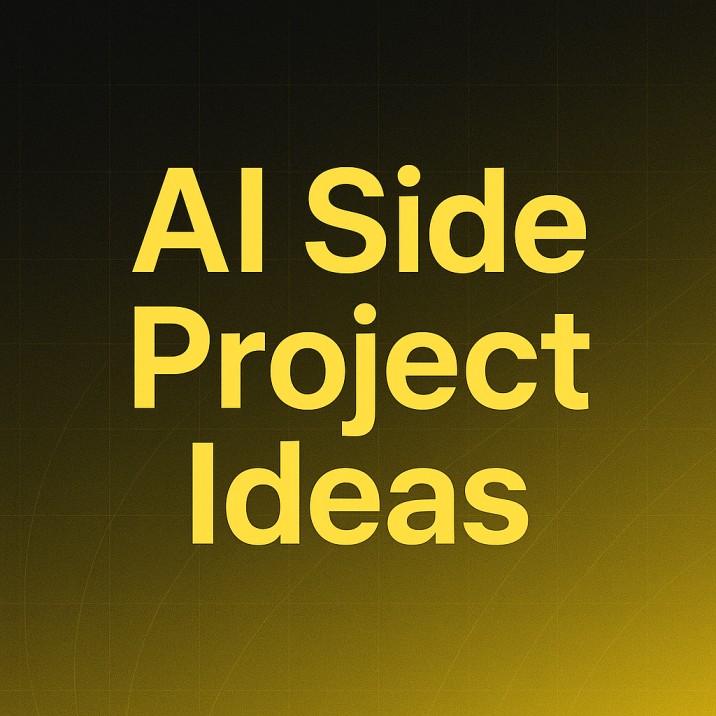
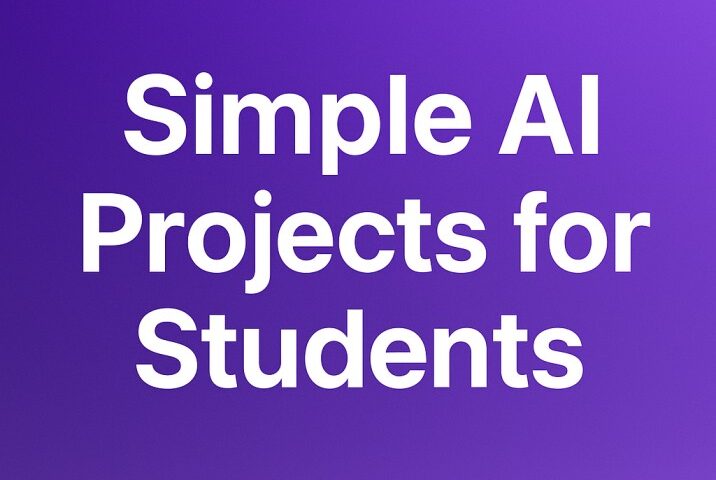
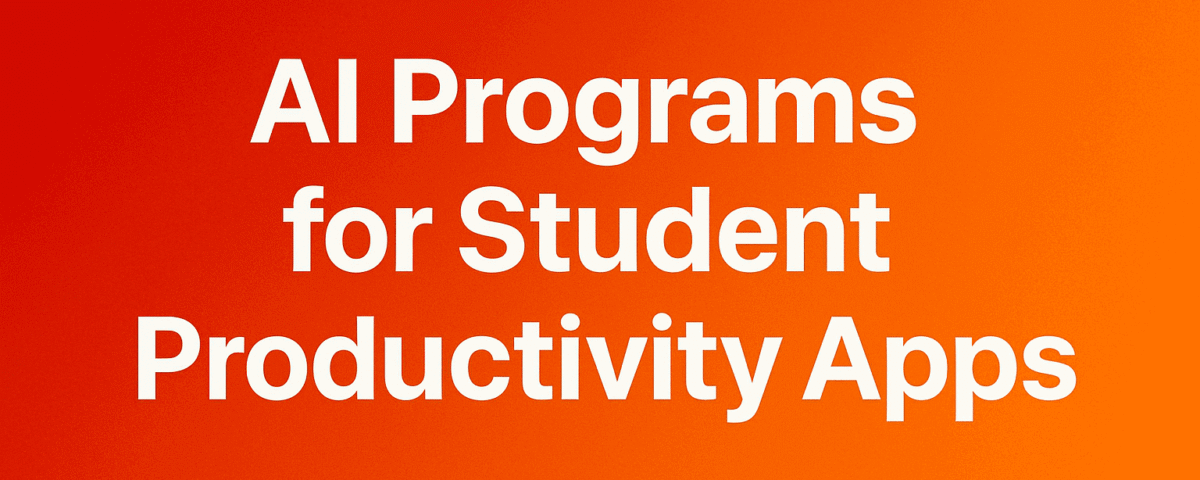
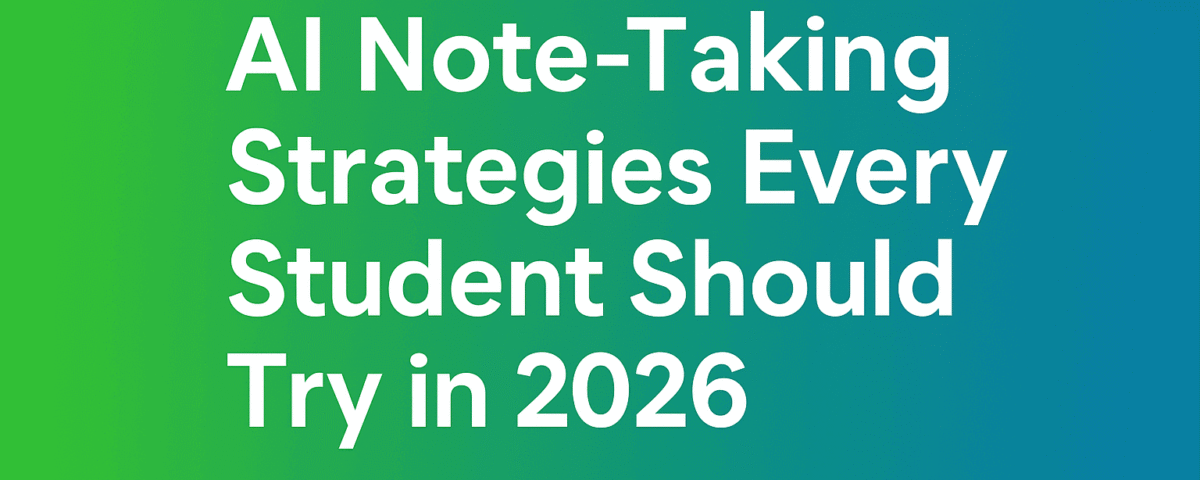
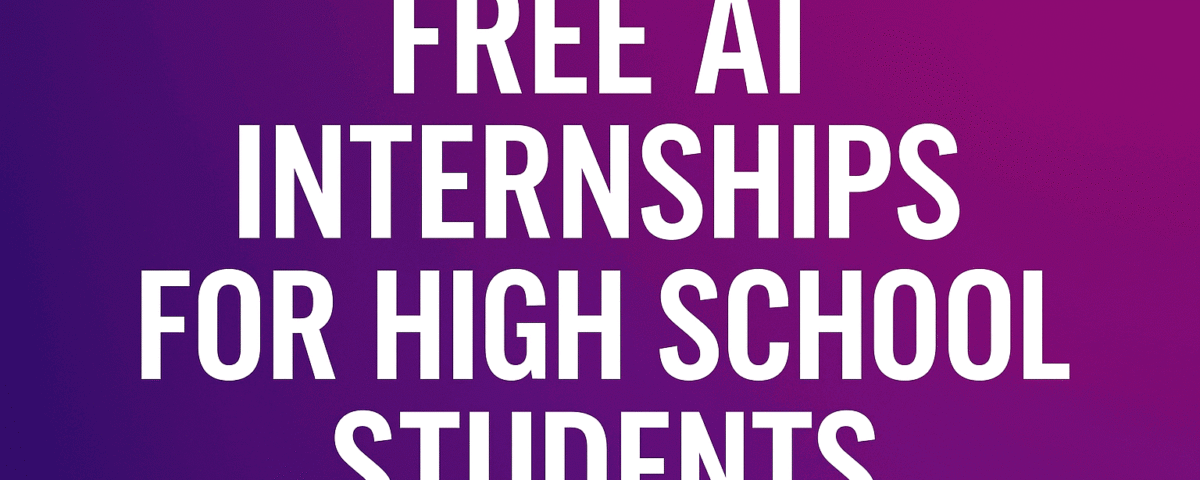

[…] For more simple ideas to try next, skim this helpful overview of starter projects: 8 AI Side Project Ideas for Beginners. […]